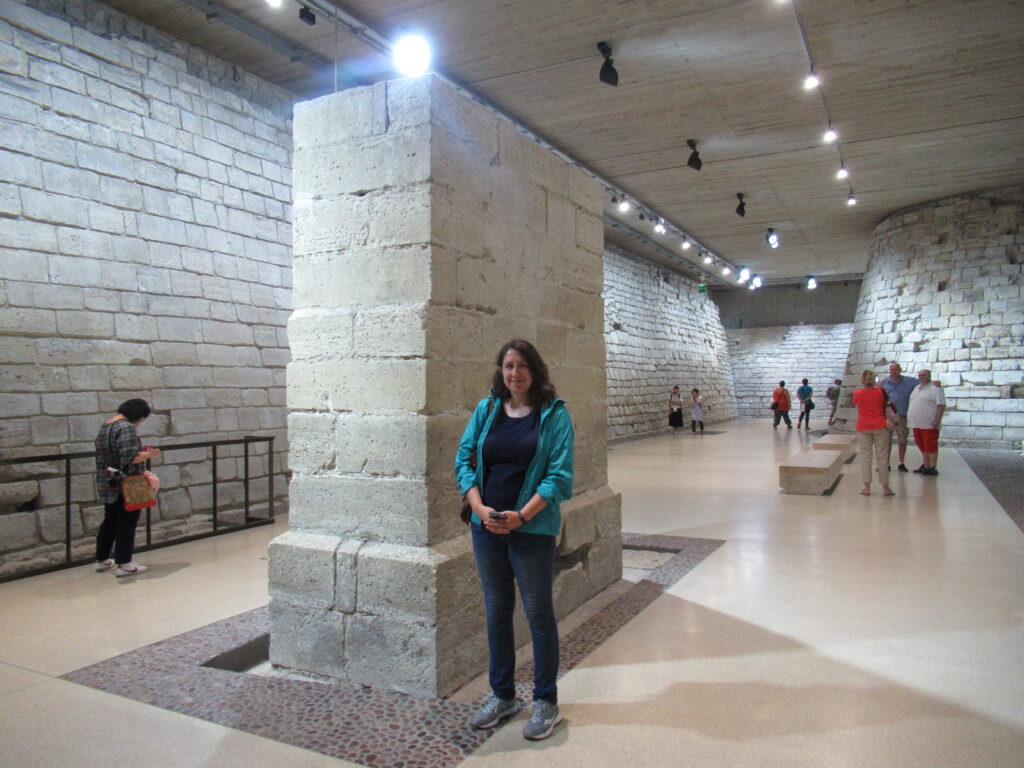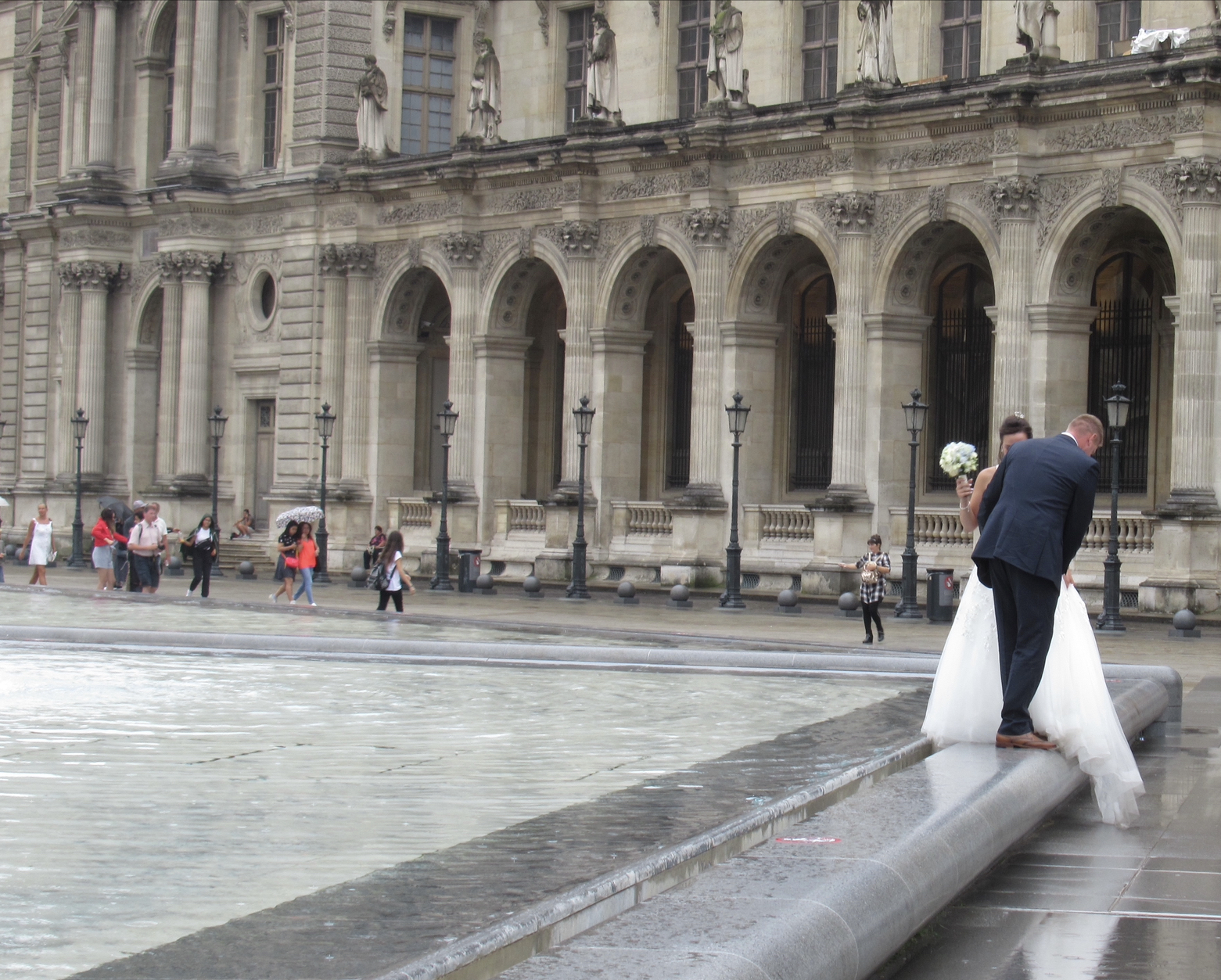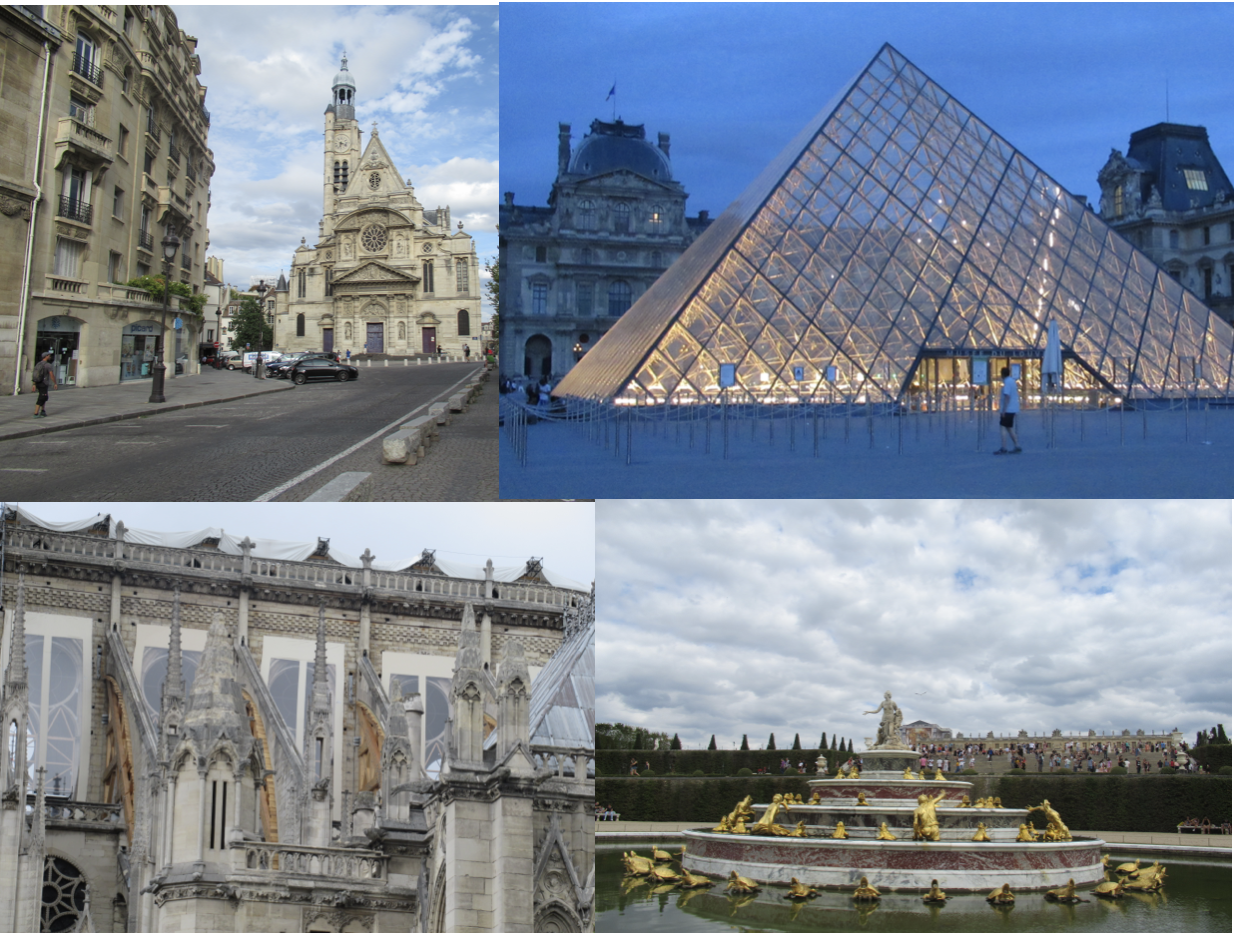Husband’s return flight was in the afternoon. It was a rainy walk to the bus stop. With umbrellas graciously provided by the hotel, we accompanied him to the Roissybus to see him off, then ate and caffeinated, and headed to the Louvre.
Neither of us was much interested in looking at artwork and were not interested in seeing the famed Mona Lisa. As it turned out, that was particularly fortunate. The museum had moved the painting in order to do work on the gallery where it normally lived. Long lines were now even longer due to the small size of its temporary home.
Since Betsy had already visited so much of the museum, and since it would all be new to me no matter where we went, I let her decide which parts to see.
With both of us more interested in history than art, we headed to excavated areas of the original fort. This building was amazingly, incredibly massive. It was build on the Île de la Cité when that island constituted the whole of Paris. At that time, technology for this kind of fortress depended on stone. Thick, bulky, stone walls predominated, with stone exteriors and rubble-fill behind them.

The corridor we walked was part of the moat of the fort, deep, wide, and to the average medieval army, pretty near uncrossable. We saw one of the old cylindrical towers at the corners of the fort which allowed lookouts and archers to see and take pot-shots at approaching attackers. Looking at these structures, I could not help thinking of the movie Monty Python and the Holy Grail, where the band of knights encounters a medieval castle protected by Frenchmen shouting down on them from the ramparts. (“I fart in your general direction!”)
We made our way to St. Germains des Pres looking for someplace to eat lunch, and stumbled on Café de Flor. This cafe had been the haunt of a number of significant French figures, including Jean Paul Sartre and Simone de Beauvoir. Originally on my list of places of interest, it had been been dropped as our planned itinerary changed. A happy coincidence, then, that we found it. Not so happy when we saw the tourist-high prices on the menu. Across the street was another café where the prices although high, were not stratospherically so. Rather than eating at Café de Flor, we ate across the street looking out at Café de Flor. Café de Flor adjacent, if you will.
Our next, and as it turned out, the last visit that day for me was to Musée Cluny, another historical museum devoted to medieval art. Besides artwork from the middle ages, there are remnants of an ancient Roman bath complex. Plaques described the artwork and everyday objects on display. I imagine it is a mark of the medieval mind that there is so much symbolism in even the smallest things. The handle of a soup spoon can have the small image of a bird which symbolizes some royal house or other, perched on a branch of some tree which symbolizes some other royal house, a crown or halo or something hovering over it, symbolizing something divine or priestly. Did people really inhabit their world thinking of all these things while they slurped their soup? During the last hour or so of our visit, my feet once again started to hurt. And once again I sent Daughter ahead while I sat on a bench. There was only one upside to my foot problems: I looked like such a miserable old lady that people offered me seats at the bus stop and on buses. (I also made a note to myself to do some research when I got home and figure out what was going on with my feet and why my two pairs of shoes, which seemed so comfortable at first became so painful by the end.)
At the hotel, I went online and checked in to my flight tomorrow.
While I rested, Betsy took one last trip to visit the Montemarte section of Paris.




